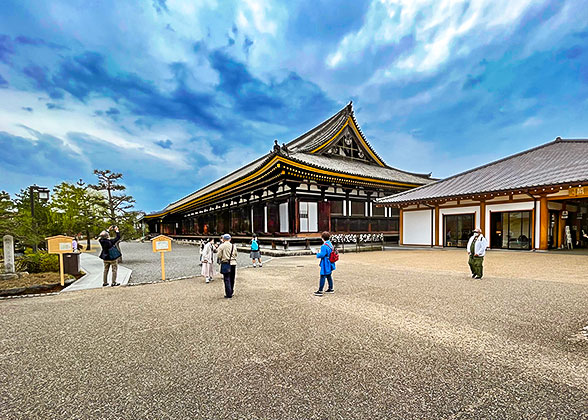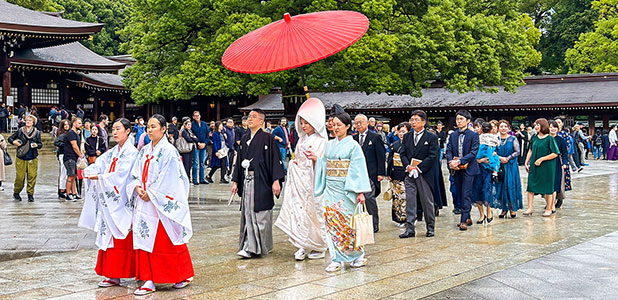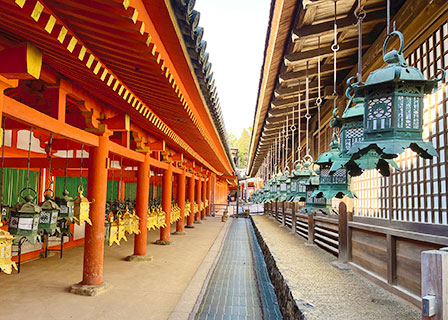Sanjusangendo Temple
Commonly referred to as a temple today, Sanjusangendo, officially named Rengeo-in, was the main hall of Ho-juji Palace whose rest buildings have lost to near 860 years of history. 120 meters (394 feet) in length, it’s the longest wooden structure in the world. Inside, you can find a world-class spectacle of 1,001 human-size statues of thousand-armed Kannon, the bodhisattva of mercy, which the functioning Temple is dedicated to. Now, it’s also the place for an annual archery competition, a tradition dating back 870 years.
|
|
|
Birth of Sanjusangendo Temple and Its Name
A Temple Built for Emperor
Sanjusangendo sits at the center of the former Ho-juji Palace, whose construction was ordered by the 77th emperor of Japan in 1164. It’s where the Emperor resided to exercise Insei, literally “cloistered government”, a strategy used by his like to guard against powerful opponent families while ruling the country from a Buddhist monastery. The Emperor was buried to the east of the Sanjusangendo hall when he died after retirement.
Ho-juji Palace must cover a large area when it’s first built, but all it contained have totally succumbed to historical vicissitudes, save Sanjusangendo.
Sanjusangendo Has a Holy Name
Literally meaning “thirty-three halls”, the long Sanjusangendo is curiously divided by 34 columns into 33 spaces. The mystery is easy to unravel - it hints at 33 manifestations of Kannon Bodhisattva.
|
|
|
The Spectacle of 1,001 Kannon Statues
Upon entering Sanjusangendo, you are going to be greeted by an overwhelmingly solemn air from 1,001 statues of thousand-armed Kannon, all about 1.7 meters tall, standing on the terraced floor of the hall hands joined. They appear to be same, but if you look carefully, you can see that each individual has her own facial features. Of all the statues, 124 were carved back in the Heian Period (794 - 1192), with the rest added in the following centuries. It’s even said that anyone would find a Kannon that resembles himself or herself in appearance!Before the sea of the statues and in the middle of the hall sits an 11-faced thousand-armed Kannon. 3.3 meters tall, this cypress wood-carved statue is the grandest. There are also 28 guardian Legions or Attendant Deities surrounding the Bodhisattva, which were all based on images found in Chinese Buddhism. You can pay a special attention to statues of Fujin, the god of wind, and Raijin, the god of thunder, famous for their most dynamic poses. With eyes inlaid with jade, all these marvelous statues are representative works of the late Kamakura period (1192 - 1333).

A panoramic view of Sanjusangendo Temple
|
Tog-shiya Archery Competition Held in Sanjusangendo
To the west of the Sanjusangendo hall is a long and narrow opening, where you may find some scratches on the building that were left by arrows. The Edo period saw the heyday of Sanjusangendo as the playing field for archers from across Japan to compete - a tradition that is said to originate in the 12th century and has been passed down to this day.Called Tog-shiya, the archery competition has evolved from an activity of samurai to a festival starred by to-be adults under 20, who would dress themselves up in traditional clothes and come here to shoot. Tog-shiya is held ceremoniously and annually on the Sunday before January 15.
|
|
|
Know Before Going
Opening hours:9:00 am -16:00 pm (November 16 – March 31, no closing days);
8:30 am – 17:00 pm (April 1 – November 15, no closing days)
Admission fee: 600 yen/per person
How to Get There (from Kyoto Station)?
By bus:Take bus No. 100/206/208 and get off at Hakubutsukan-Sanjusangendo-mae Stop. The bus trip takes about 10 minutes.
By train:
Take the Keihan Line, get off at Shichijo Station, and walk 7 minutes or so eastward.
Nearby Attractions
Kiyomizu-dera Temple(1.5 km/0.9 mi away to the northeast, 25 min’s walk)Aged over 1,200, Kiyomizu-dera is also known as Pure Water Temple, a name derived from the Otowa Waterfall in the temple whose pure water are drank by visitors seeking happiness. Whether to pray, look over Kyoto from its main hall, or join locals to mediate at sunset at West Gate, the temple is a must-visit for whoever coming to Kyoto.





